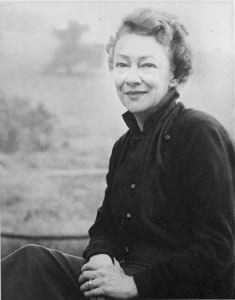Borëd Artist Spotlight | Kay Sage
- Bored B.B

- Oct 27, 2021
- 2 min read
Katherine Lynn Sage was a Cancer born on June 25, 1898. She was the second daughter of a prosperous middle class family in Albany, New York. Her parents, Anne and Henry Sage, divorced while Katherine was very young. She spent her childhood traveling between Europe with her free-spirited mother, and New York, where her father, a state senator, remained. Her travels with her mother gave her an opportunity to see the world while establishing an eye for the arts.
In and out of schools as a child, Sage never took to formal education. As Judith Suther describes in her biography of Kay Sage, she never spent more than three years in a single institution. After spending time in San Francisco and Santa Barbara, Sage attended the Corcoran Art School in Washington, D.C. before returning to Europe in 1920. There she learned to paint, and immersed herself in the thriving contemporary art scene. She was particularly influenced by time spent painting in the Roman Campagna with the artist’s group led by Onorato Carlandi, where she was the only woman permitted to participate.
In 1925, Sage married an Italian nobleman, Prince Ranieri di San Faustino, and the obligations of her position in high society kept her from painting. After ten years of marriage Sage divorced her husband, and her new painting turned abstract and transcendental.
Following the divorce, Sage moved to Paris and became involved in the Parisian surrealist movement. Following her move to Paris, Sage’s work caught the attention of Yves Tanguy, and by extension Surrealist leader Andre Breton. She admired Tanguy’s style, as well as the work of their colleagues. This became an inspiration for Sage in her development as a surrealist. At the start of World War II, Sage and Tanguy moved from Paris to the United States, and in 1940, Kay Sage and Yves Tanguy married in Reno, Nevada, eventually settling in Woodbury, CT for the remainder of their lives.
Sage exhibited at the Pierre Matisse Gallery in 1940, and as part of the “Le Surrealisme en 1947” exhibition at the Galerie Maeght in Paris. A trip to Europe in 1953 coincided with showings of her work in Rome, Milan and Paris. She and Tanguy received a joint exhibition at the Wadsworth Atheneum Museum of Art in 1954. Their works were displayed in separate galleries, granting their wish to be considered independently.
While in Woodbury, Tanguy and Sage helped fellow Parisian surrealists escape the war and find solace in their home. It is during Sage’s marriage to Tanguy, and their lives together in Connecticut, that she created her best work. Her surrealism was unique, reflecting personal experience and inspiration from everyday images. After her husband died in 1955, her eyesight began to fail, and she turned towards creating collage reliefs. She also proceeded to publish four books of poetry before her death in 1963. Her ashes were spread along the coast of Brittany, France.
Come back next week to see the next artist in the spotlight!
Want your art featured?
Stay Bored 🖤





















Comments